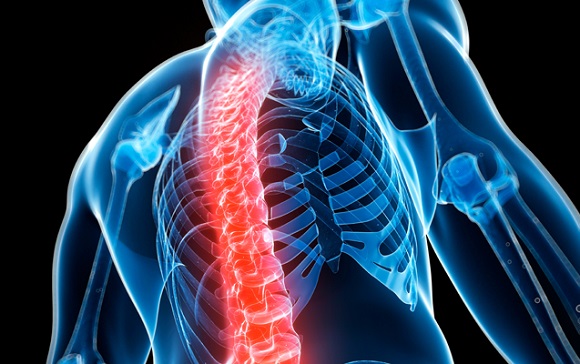|
Could new bone-forming growth factor reverse osteoporosis? Scientists at the Children's Medical Center Research Institute at UT Southwestern in Dallas, TX, have uncovered a new bone-forming growth factor that may reverse the bone loss associated with osteoporosis. They say that this discovery has implications for regenerative medicine. Osteoporosis develops over several years and is a condition that weakens bones. This weakness makes bones more fragile and susceptible to breakages. More than 50 million people in the United States aged 50 and older are affected by osteoporosis or low bone mass. Treatments for osteoporosis currently involve treating and preventing bone fractures, as well as using medication to strengthen bones. Bisphosphonates are drugs that slow down or prevent bone damage. Estrogen therapy is also used in some groups of people to help maintain bone density. While the majority of existing treatments for osteoporosis reduce the rate of bone loss, they do not promote new bone growth. There is one agent, called Teriparatide (PTH), that is approved for the formation of new bone. However, the use of PTH is limited to only 2 years due to a risk of developing osteosarcoma (bone cancer). The researchers at the Children's Medical Center Research Institute (CRI) at UT Southwestern called the newly discovered bone-forming growth factor Osteolectin, or Clec11a, and they published their findings in eLife. Dr. Sean Morrison - CRI director, Mary McDermott Cook Chair in Pediatric Genetics, and the Kathryne and Gene Bishop Distinguished Chair in Pediatric Research - led the study. Particular bone marrow and bone cells have been found to produce Osteolectin. The team at CRI say they are the first to demonstrate that Osteolectin promotes new bone formation from skeletal stem cells in the bone marrow. Osteolectin significantly increased bone volume, reversed bone loss Morrison and colleagues discovered that when Osteolectin was deleted in mice, they experienced acceleration in bone loss during adulthood. The mice also exhibited symptoms of osteoporosis, such as diminished bone strength and the delayed healing of fractures. The researchers aimed to find out whether it was possible for Osteolectin to reverse bone loss after osteoporosis had developed. Morrison and team used two groups of mice that had their ovaries removed to mimic the type of osteoporosis that develops in postmenopausal women. They provided the mice with a daily injection of either PTH or Osteolectin. When compared with PTH - an agent already proven to promote bone formation - Osteolectin showed similar results. Compared with untreated mice, the bone volume in both PTH-treated and Osteolectin-treated mice had significantly increased. Both treatments were shown to successfully reverse the bone loss that occurred as a result of ovary removal. "These results demonstrate the important role Osteolectin plays in new bone formation and maintaining adult bone mass. This study opens up the possibility of using this growth factor to treat diseases like osteoporosis," says Morrison. Morrison is also the principle investigator for the Hamon Laboratory for Stem Cell and Cancer Biology. Alongside the Hamon Laboratory scientists, Morrison plans to conduct further experiments to test Osteolectin's therapeutic potential. The team's objective is to identify the receptor for Osteolectin, which they say will help them to understand the signaling mechanism that the growth factor uses to promote the formation of bone. Written by Hannah Nichols Sources: medicalnewstoday.com |
The contents of the articles from E-daifu Site are for informational purposes only. The Content is not intended to be a substitute for professional medical advice, diagnosis, or treatment. Always seek the advice of your physician or other qualified health provider with any questions you may have regarding a medical condition. Never disregard professional medical advice or delay in seeking it because of something you have read on the E-daifu!This website and related information providers are not responsible for any errors in the information.











